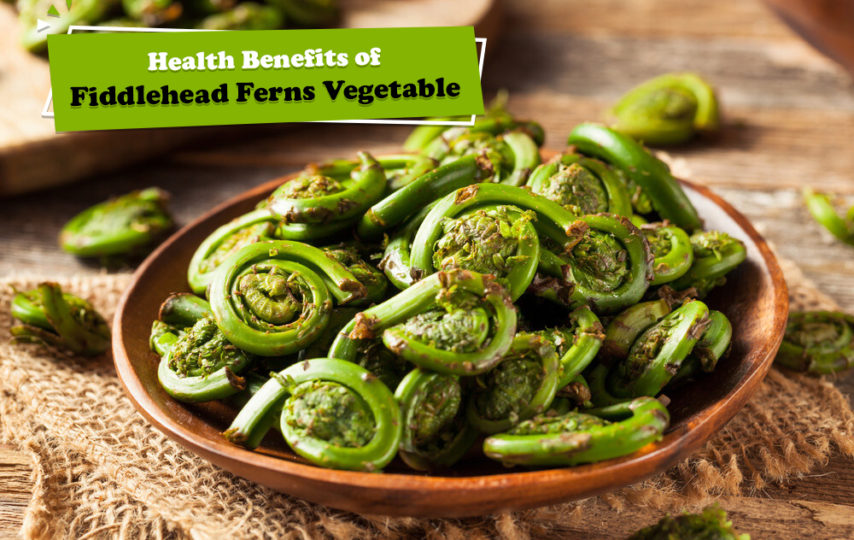Each fiddlehead is a tightly curled, deep green stock measuring about 4 cm in diameter, giving the height of about 10-12 cm off the ground. The tender shoots are coated with brown scales, which have to be rubbed off before cooking. Vitamin A is an excellent natural antioxidant and is needed by the body to keep skin and mucus films’ integrity.
What are fiddlehead ferns?
Ferns may not have magical qualities, but they can add a delicious nutty test to salads and veggie side dishes. One of the most popular variations is the fiddlehead fern, so-called for its spiraled form resembling a violin’s scroll.
They in winter for just a few weeks every spring, though they’re available year-round in cold or pickled form. They mainly hunted by hand, a task completely left to professionals, as many ferns resemble the fiddlehead but are not always safe to consume.
Many people express fiddlehead ferns’ flavor as a cross between asparagus and baby spinach, while others discover hints of artichoke, mushroom, and a broad nutty aroma. It is also a necessary vitamin for vision. Research suggests that natural foods abundant in vitamin A help the body protect against lung and oral decay cancers.
Some varieties of fiddleheads are carcinogenic
Though available regionally in some supermarkets and eateries, fiddleheads are not develop and are available only seasonally.
In agricultural areas, fiddleheads harvested by people in early spring. Fiddlehead greens known to be abundant with iron as well as fiber despite having antioxidant properties too.
How to make fiddlehead ferns?
Fiddleheads have a bit of a grassy taste. Their form is suggestive of string beans or asparagus, and they work well in recipes that ask for those veggies. They make an outstanding substitution for cactus or okra, too. They’re also excellent on their own as a side dish: saute them in a little bit of olive oil with a touch of chopped garlic and salt.
The Centers for Disease Control and Prevention (CDC) has recognize foodborne illness cases from eating fresh or lightly cooked fiddleheads, so it’s advised to boil them first before applying them in recipes that call for sauteing, stir-frying, or baking. Since their consistency can be pretty firm, this also tenderizes them.
Cleaning Fiddleheads
Descending the rinsed fiddleheads in a bowl of clean, cool, potable water should follow rinsing to raise the remainder of the brown papery covers, and repeat as required. Fiddleheads should appear clear after several rounds of rinsing and soaking steps.
Short-term Storage
Remember to have fiddleheads frozen until you are ready to cook or store them. They can be stored in the fridge but should be consumed or stored within a week or less for best quality.
Health benefits of fiddlehead ferns
Fiddlehead ferns are especially high in vitamin A, which supports organs like the heart and lungs function perfectly; it also performs a vision and the immune system. That same serving has 30% of the RDA for vitamin C and 4.5 grams of protein, which can support you feel fuller longer.
A rich origin of potassium, fiddlehead fern uses can include promoting muscle health by stopping cramping. Fildena 100 are best remedy for men’s Health problems.
The omega-3 fatty acid content seen in fiddlehead ferns gives this vegetable a natural anti-inflammatory. Anti-inflammatory vegetables provide benefits as fiddlehead ferns carry:
- Protecting neurodegenerative disorders like Alzheimer’s and Parkinson’s
- Decreasing high blood pressure levels
- Defending toward various autoimmune disease signs, including IBS
- Fiddlehead ferns also carry iron, which is necessary to stopping anemia.
Fiddlehead Ferns best chosen from late April to early June, just as the snow melts. Collection can be do by pinching and catching the fiddleheads or by simply making them with a knife. Great care should always be taken when collecting, not to damage any of the resting fiddleheads on the “king.”
Sustainability is an important element of the harvesting process. It advised to take less than half of the fiddleheads on anyone’s crown to assure the plant’s longevity. If they’re less than four fiddleheads on a crown, the fern either too young or stunted and should not be store. Taking more than half or collection from an immature or stunted head can harm or even destroy the plant.
How to Search for Fiddlehead Ferns?
Fiddleheads are the unopened petals of the ostrich fern. Young fiddlehead fronds are a darling among foragers. Tadalista is also good for ED. They arrive in late spring when the new, emerald green leaves force their tightly furled leaders from the rootstock’s slight brown flakes. The fiddlehead period is a brief one in late April or early May as the soil’s leaves force up. Once the leaves open, the chance has moved.
Knowing Fiddlehead Ferns
It’s best to know Ostrich ferns in the summer. Some ferns seem similar to the ostrich fern but can be poisonous. Ostrich ferns have long, beautiful fronds that taper towards the bottom-their unique feature.
The fiddleheads will emerge from thin brown scales and be very bright green. They are unique, and you’ll not struggle to recognize them.













